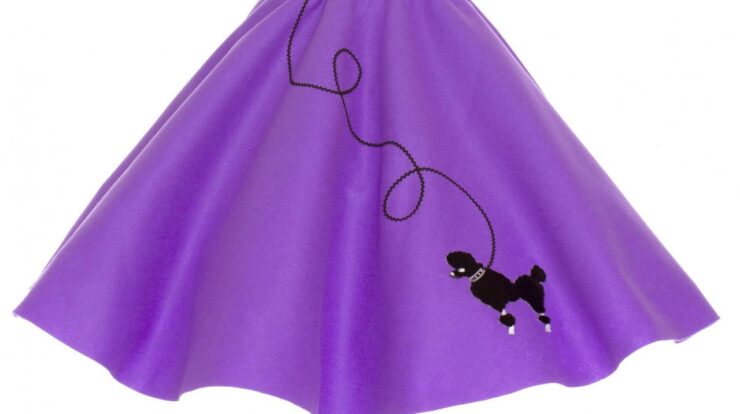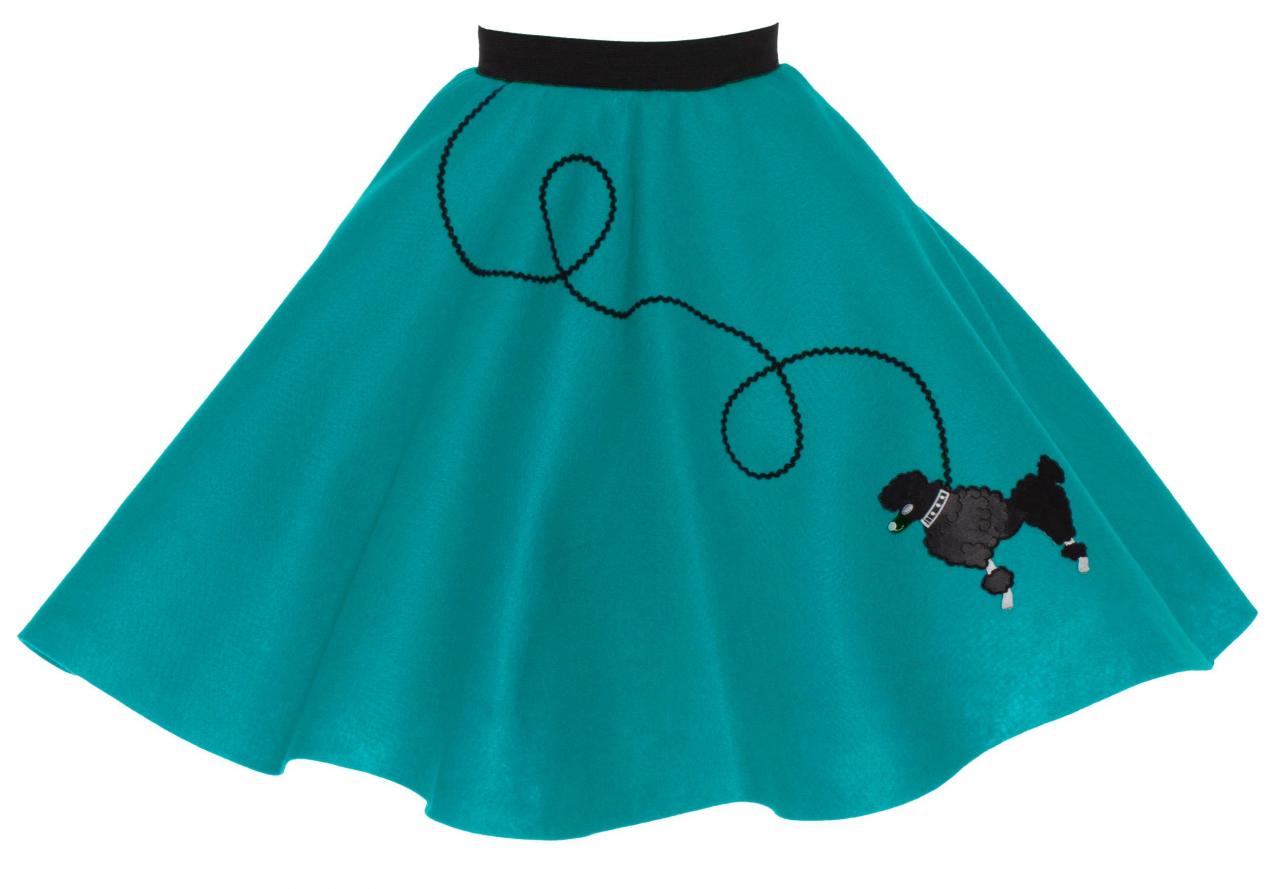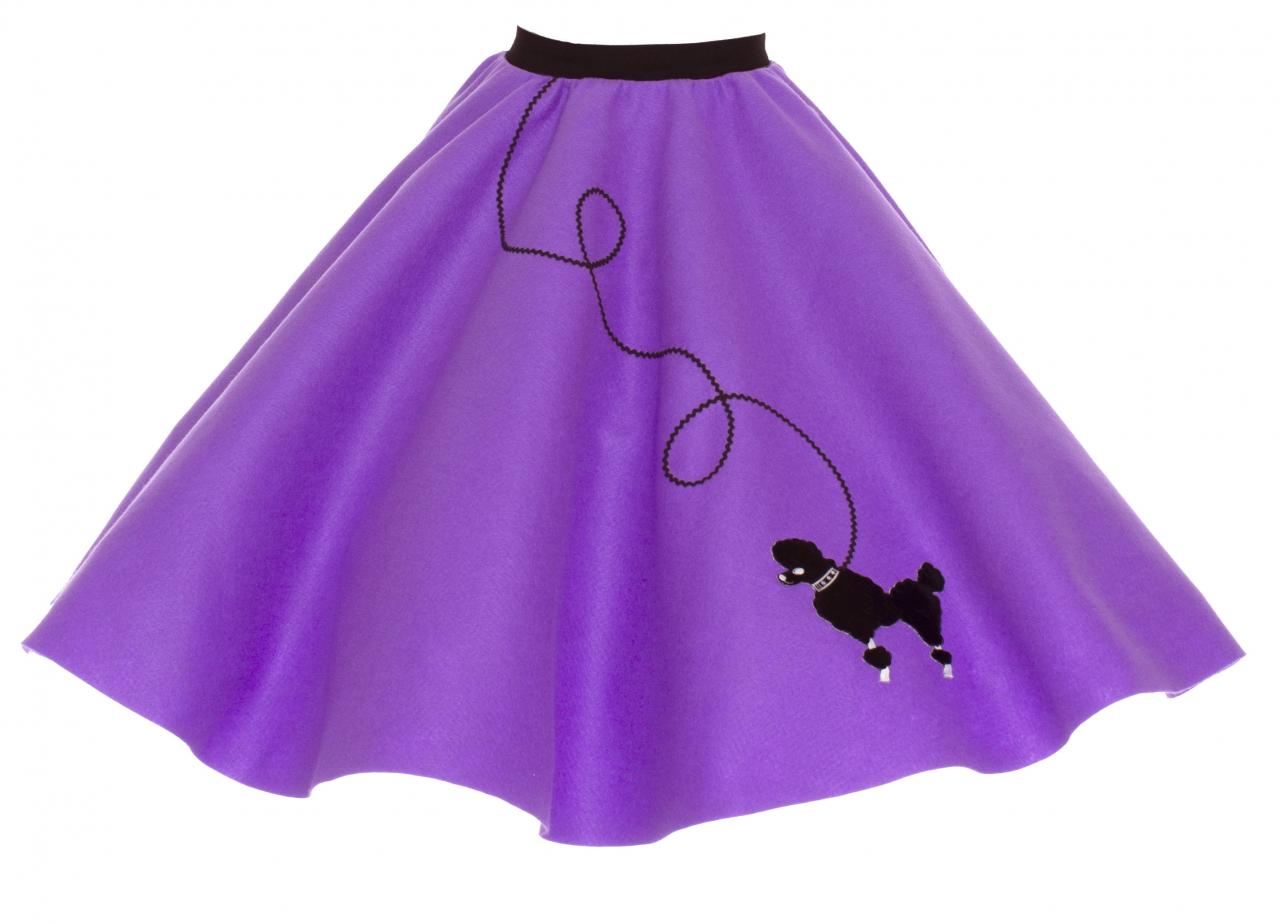
The poodle skirt, an iconic symbol of teenage rebellion and femininity, has captivated generations with its playful design and cultural significance. From its origins in the 1950s to its modern-day reinterpretations, the poodle skirt continues to enchant fashion enthusiasts and evoke a nostalgic longing for a bygone era.
Emerging in the post-World War II era, the poodle skirt quickly gained popularity among teenage girls, becoming a symbol of their newfound independence and desire to express their individuality. Its distinctive design, featuring a full, flared skirt adorned with appliqued or embroidered poodles, exuded a youthful exuberance that resonated with the spirit of the time.
Historical Context of the Poodle Skirt
The poodle skirt emerged in the 1950s as a symbol of teenage rebellion and femininity. It became a ubiquitous fashion statement, reflecting the social and cultural changes of the time.
Origins and Timeline
- Late 1940s: Skirts with poodle appliqués appeared on the scene, popularized by Hollywood stars.
- Early 1950s: The poodle skirt gained widespread popularity among teenage girls, becoming a symbol of youth culture.
- Mid-1950s: The poodle skirt reached its peak of popularity, with variations and embellishments emerging.
- Late 1950s: The poodle skirt began to decline in popularity as new fashion trends emerged.
Social and Cultural Factors
The poodle skirt’s rise was influenced by several factors, including:
- Post-World War II economic boom and increased consumerism.
- Growing teenage population and the emergence of youth culture.
- Rebellion against traditional gender roles and societal norms.
Design and Style of the Poodle Skirt

The poodle skirt is characterized by its distinctive design features:
Typical Design Features
- Full, gathered skirt falling below the knee.
- Circle or A-line silhouette.
- Cotton or felt fabric.
- Large poodle appliqué or embroidery on the front or side.
Styles and Variations
Poodle skirts came in a variety of styles, including:
- Solid colors (e.g., pink, blue, black).
- Prints (e.g., polka dots, gingham).
- Embellishments (e.g., sequins, ribbons, fringe).
Iconic Examples
Some of the most iconic poodle skirts include:
- Sandy Olsson’s poodle skirt in the movie “Grease.”
- Marilyn Monroe’s poodle skirt in the movie “Gentlemen Prefer Blondes.”
- The poodle skirt worn by Lucy Ricardo in the TV show “I Love Lucy.”
Symbolism and Cultural Impact of the Poodle Skirt
The poodle skirt became a symbol of teenage rebellion and femininity:
Teenage Rebellion
The poodle skirt represented a break from traditional dress codes and societal expectations.
Femininity, Poodle skirt
Despite its rebellious nature, the poodle skirt also embraced femininity, with its full skirt and poodle appliqué.
American Youth Culture
The poodle skirt became synonymous with American youth culture in the 1950s, symbolizing the carefree and optimistic spirit of the time.
References in Popular Culture
The poodle skirt has been referenced in numerous works of popular culture, including:
- The song “Poodle Skirt and a Ponytail” by Bill Haley & His Comets.
- The TV show “Happy Days,” which featured characters wearing poodle skirts.
- The movie “American Graffiti,” which depicted teenagers in poodle skirts.
Revival and Modern Interpretations of the Poodle Skirt

The poodle skirt has experienced a revival in recent years:
Modern Designers
Contemporary designers have reinterpreted the poodle skirt for modern fashion, incorporating new materials, patterns, and styles.
Examples
- Marc Jacobs’ poodle skirt collection in 2013.
- Betsey Johnson’s poodle skirt designs with updated prints and embellishments.
- Independent designers creating handmade poodle skirts with unique fabrics and appliqués.
Final Review
Today, the poodle skirt remains a beloved fashion item, inspiring contemporary designers to reinterpret its classic silhouette in fresh and innovative ways. From vintage-inspired pieces to modern takes incorporating bold colors, geometric patterns, and unexpected embellishments, the poodle skirt continues to capture the imagination and evoke the carefree spirit of its origins.
Helpful Answers: Poodle Skirt
What is the historical significance of the poodle skirt?
The poodle skirt emerged in the 1950s as a symbol of teenage rebellion and femininity, reflecting the changing social and cultural landscape of the post-World War II era.
What are the characteristic design features of a poodle skirt?
A typical poodle skirt features a full, flared skirt with a length that falls below the knees. It is often adorned with appliqued or embroidered poodles, and may include other embellishments such as sequins, ribbons, or lace.
How has the poodle skirt been referenced in popular culture?
The poodle skirt has been featured in numerous movies, TV shows, and music videos, often as a symbol of nostalgia and the carefree spirit of the 1950s. Iconic examples include Sandy Olsson’s poodle skirt in “Grease” and the poodle skirts worn by the Pink Ladies in “Happy Days.”






